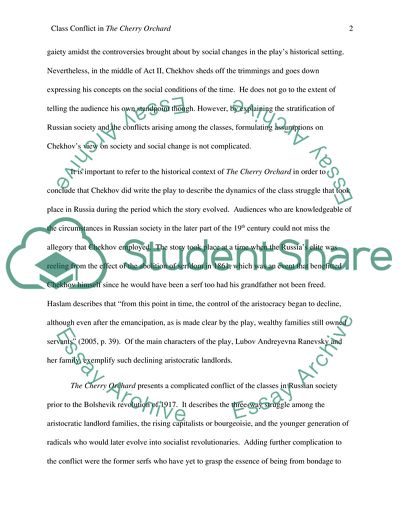Cite this document
(“Class Conflict in The Cherry Orchard Assignment”, n.d.)
Class Conflict in The Cherry Orchard Assignment. Retrieved from https://studentshare.org/literature/1743106-sara-haslam-notes-in-her-chapter-that-it-is-possible-to-interpret-the-cherry-orchard-as-an-allegory-of-class-struggle-in-brown-and-gupta-2005-p59-how-convincing-do-you-find-this-interpretation
Class Conflict in The Cherry Orchard Assignment. Retrieved from https://studentshare.org/literature/1743106-sara-haslam-notes-in-her-chapter-that-it-is-possible-to-interpret-the-cherry-orchard-as-an-allegory-of-class-struggle-in-brown-and-gupta-2005-p59-how-convincing-do-you-find-this-interpretation
(Class Conflict in The Cherry Orchard Assignment)
Class Conflict in The Cherry Orchard Assignment. https://studentshare.org/literature/1743106-sara-haslam-notes-in-her-chapter-that-it-is-possible-to-interpret-the-cherry-orchard-as-an-allegory-of-class-struggle-in-brown-and-gupta-2005-p59-how-convincing-do-you-find-this-interpretation.
Class Conflict in The Cherry Orchard Assignment. https://studentshare.org/literature/1743106-sara-haslam-notes-in-her-chapter-that-it-is-possible-to-interpret-the-cherry-orchard-as-an-allegory-of-class-struggle-in-brown-and-gupta-2005-p59-how-convincing-do-you-find-this-interpretation.
“Class Conflict in The Cherry Orchard Assignment”, n.d. https://studentshare.org/literature/1743106-sara-haslam-notes-in-her-chapter-that-it-is-possible-to-interpret-the-cherry-orchard-as-an-allegory-of-class-struggle-in-brown-and-gupta-2005-p59-how-convincing-do-you-find-this-interpretation.


